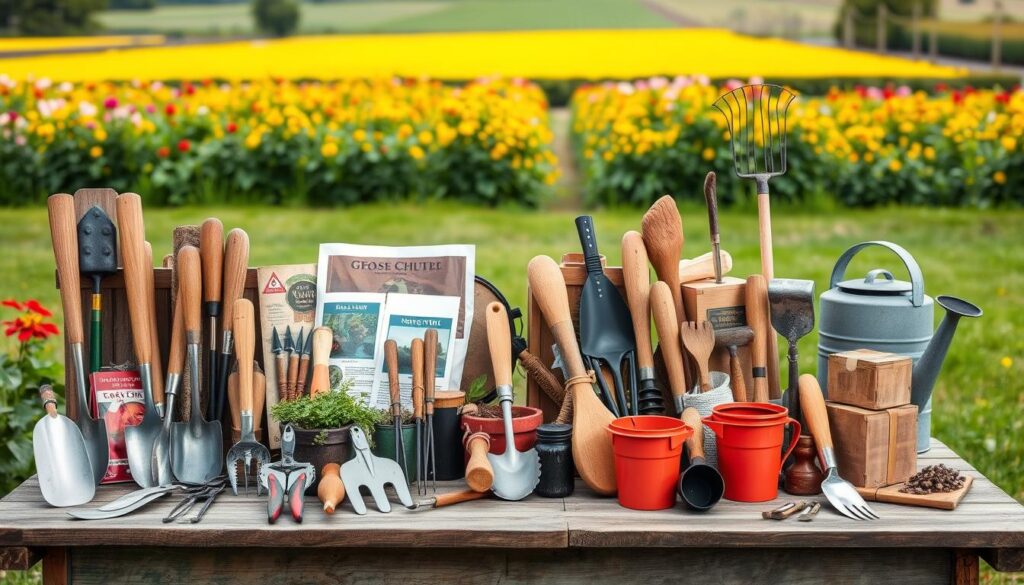Agricultural machines have evolved into an industry that has transformed modern agriculture. They may improve production, decrease labor, and maintain accuracy in farm work. So, without any further ado, here are some of the most important agricultural machines, along with images, names and how they are used.
Key Takeways
- Discover the aesthetic appeal of agricultural equipment through striking photography and insightful descriptions.
- Gain knowledge about the wide range of machines used in agriculture, from timeless classics to advanced technology.
- Understand the critical roles that different tools play in farming efficiency and productivity.
- Experience a unique perspective on agricultural machinery that blends functional necessity with visual finesse.
- Embark on a visual journey that highlights the sophistication of modern agrarian tools beyond their conventional uses.
Introduction to Modern Agriculture Technology
1. Tractors
Tractors are the backbone of modern farming. They’re versatile machines used for plowing, tilling, planting, and hauling equipment or goods. Modern tractors come with advanced features such as GPS guidance for precision agriculture.
2. Combine Harvesters
Combine harvesters are multi-functional machines designed to efficiently harvest a variety of crops, including wheat, barley, and soybeans. They perform three tasks simultaneously: reaping, threshing, and winnowing.
3. Seed Drills
Seed drills ensure that seeds are sown at the correct depth and spacing. This technology minimizes waste and maximizes germination rates, leading to healthier crop yields.
4. Plows
Plows are essential for preparing the soil before planting. They break up the soil, allowing better aeration and drainage while mixing organic matter for improved fertility.
5. Sprayers
Sprayers distribute pesticides, herbicides, and fertilizers evenly across fields. They ensure proper coverage, saving time and protecting crops from pests and diseases.
6. Balers
Balers compact harvested crops like hay, cotton, or straw into bales for easy storage and transportation. They’re essential for farmers who need to manage large quantities of crop residues efficiently.
7. Irrigation Systems
Advanced irrigation machines like drip systems or center pivots provide water to crops in a controlled and efficient manner, ensuring healthy growth even in arid regions.
8. Rotavators
Rotavators are used for soil preparation by breaking up, aerating, and leveling the soil. They’re particularly effective in preparing land for sowing.
9. Threshers
Threshers separate grain from the stalks and husks. They’re a time-saving alternative to manual threshing, crucial for high-output farming operations.
10. Cultivators
Cultivators stir the soil to remove weeds and aerate the ground. They’re an excellent choice for secondary tillage and weed control in between rows of growing crops.

Benefits of Using Agricultural Machines
- Increased Efficiency: Machines perform tasks faster and more accurately than manual labor.
- Cost-Effectiveness: Over time, machines reduce labor costs and increase output.
- Precision Farming: Advanced machines with GPS and AI technology ensure minimal waste and maximum yield.
- Reduced Labor: Machines ease the physical burden on farmers, allowing them to focus on strategic tasks.
Things to Consider When Choosing Agricultural Machines
- Farm Size: The scale of your operations will determine the type and size of machinery required.
- Budget: Investing in durable, reliable machines may have higher upfront costs but offers better long-term value.
- Maintenance: Regular maintenance is key to extending the life of your equipment.
- Versatility: Opt for machines that can perform multiple tasks to maximize utility.
FAQs About Agricultural Machines
Q1: What is the most essential agricultural machine?
A: The tractor is often considered the most essential machine due to its versatility and role in multiple farming activities.
Q2: How do combine harvesters save time?
A: Combine harvesters perform reaping, threshing, and winnowing in a single operation, significantly reducing the time required for harvesting.
Q3: Are agricultural machines suitable for small-scale farms?
A: Yes, there are compact and affordable machines designed specifically for small-scale and marginal farmers.
Q4: How do irrigation systems help in farming?
A: Irrigation systems ensure precise water delivery, promoting efficient water use and healthy crop growth even in dry regions.
Q5: What maintenance is required for agricultural machines?
A: Regular oiling, cleaning, and checking for wear and tear are necessary to keep machines in optimal condition.
Conclusion
Though agriculture is an ancient vocation, agricultural machines have become an essential part, bringing the bridge between traditional practices and modern-day agriculture. Farmers can also use this information to their advantage to improve productivity and sustainability. Small-scale farmers or mega-farming managers, investing in dawn farming tools (machines) makes your farming journey better. Adopt technology and enjoy the fruits of efficient and effective farming!
